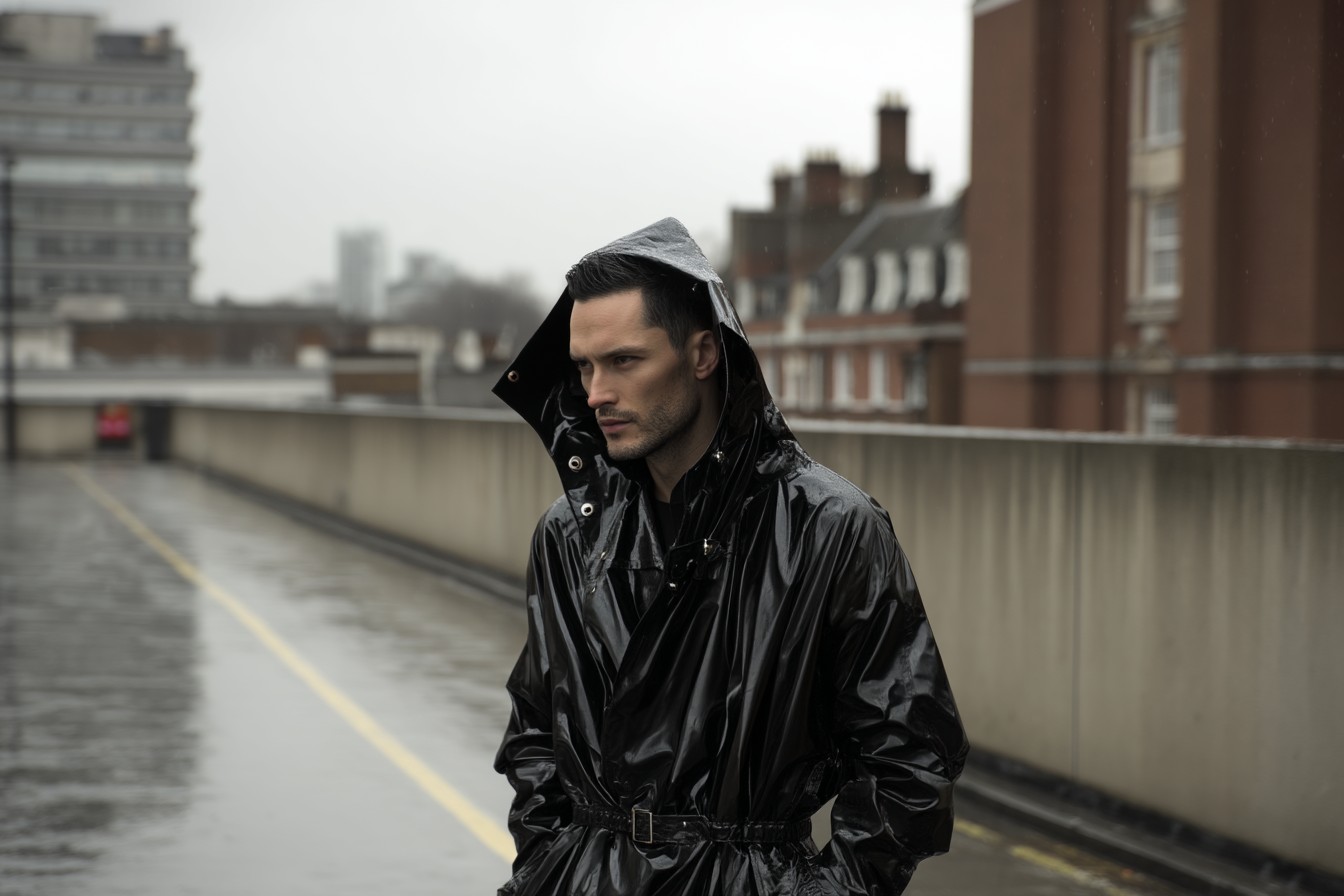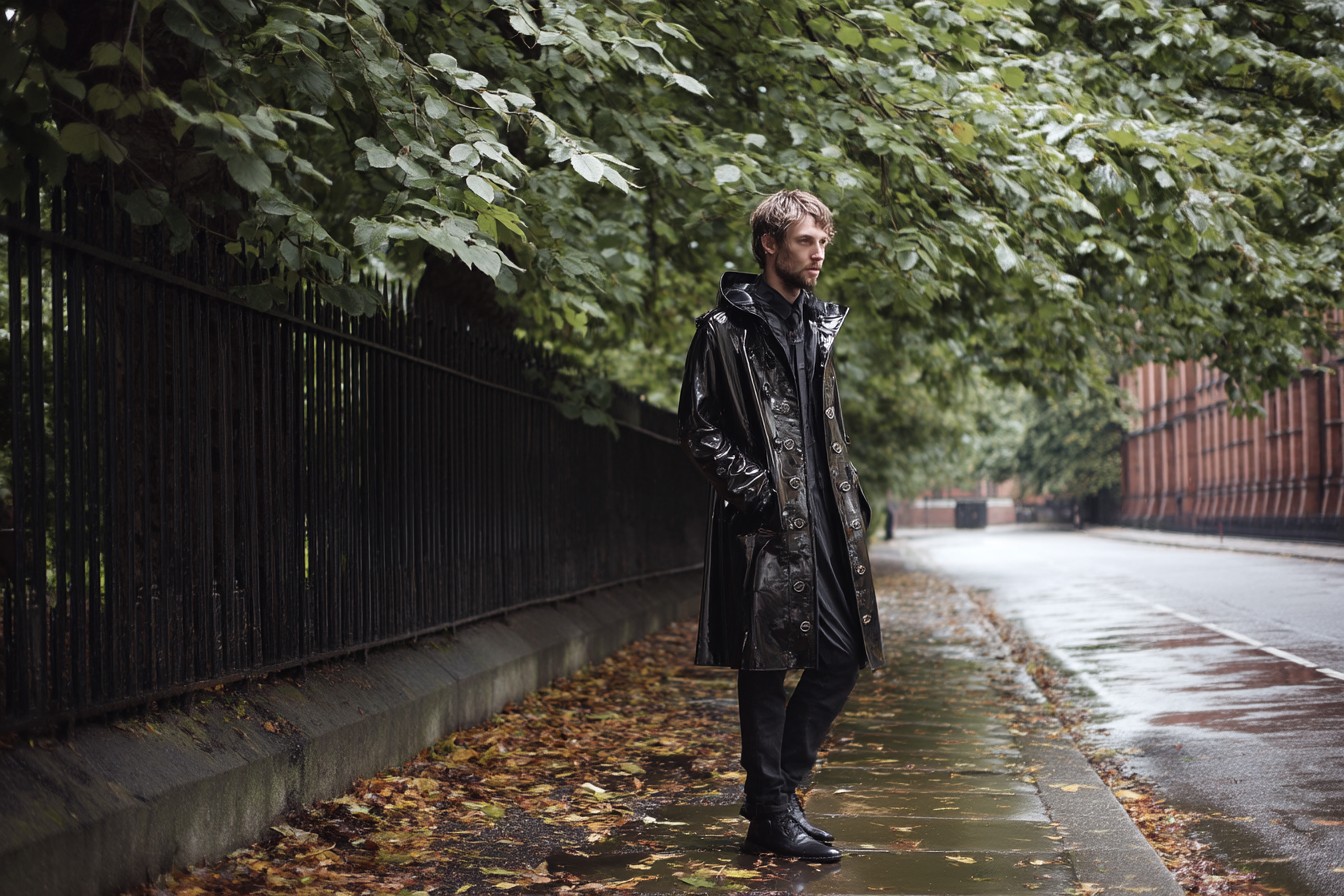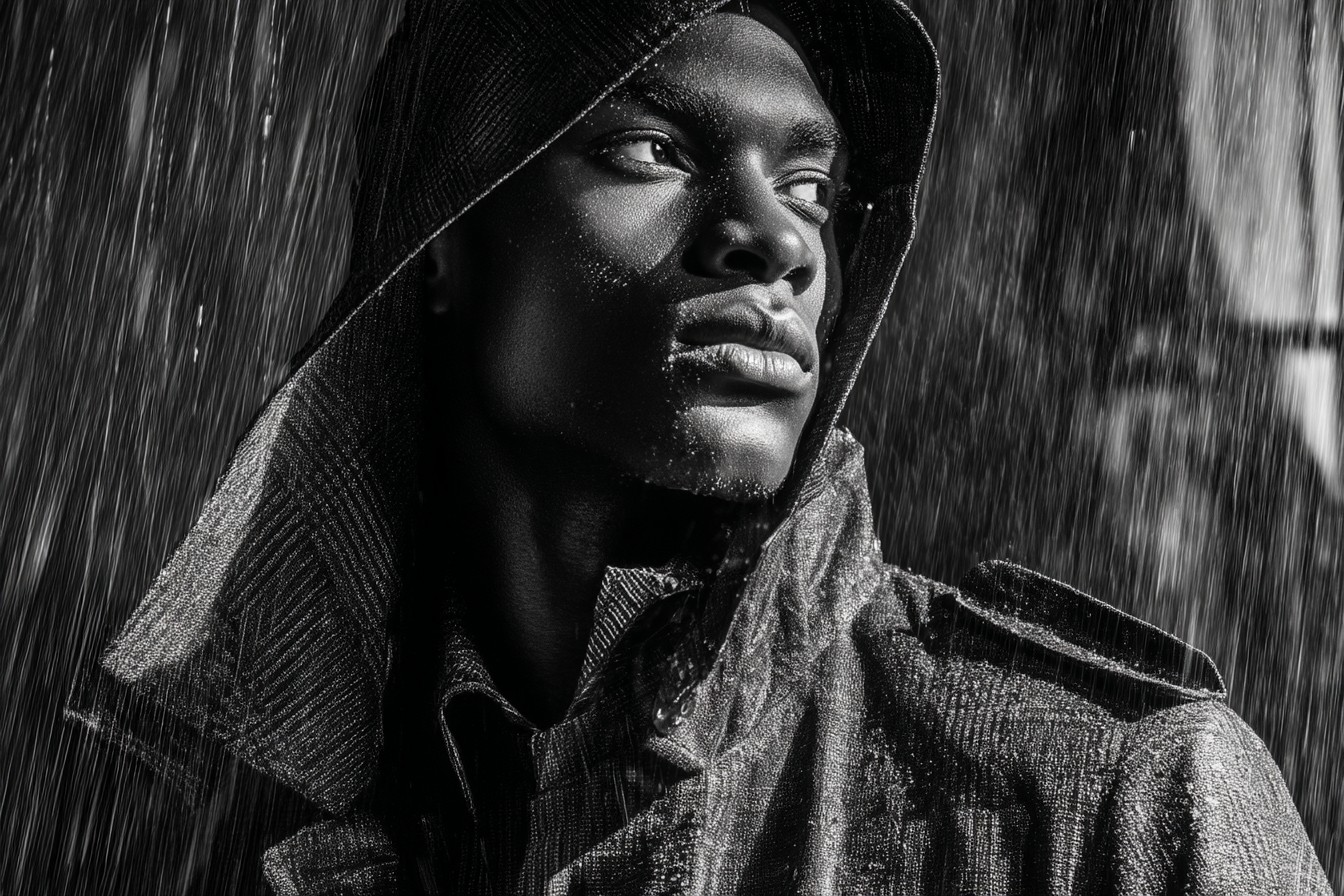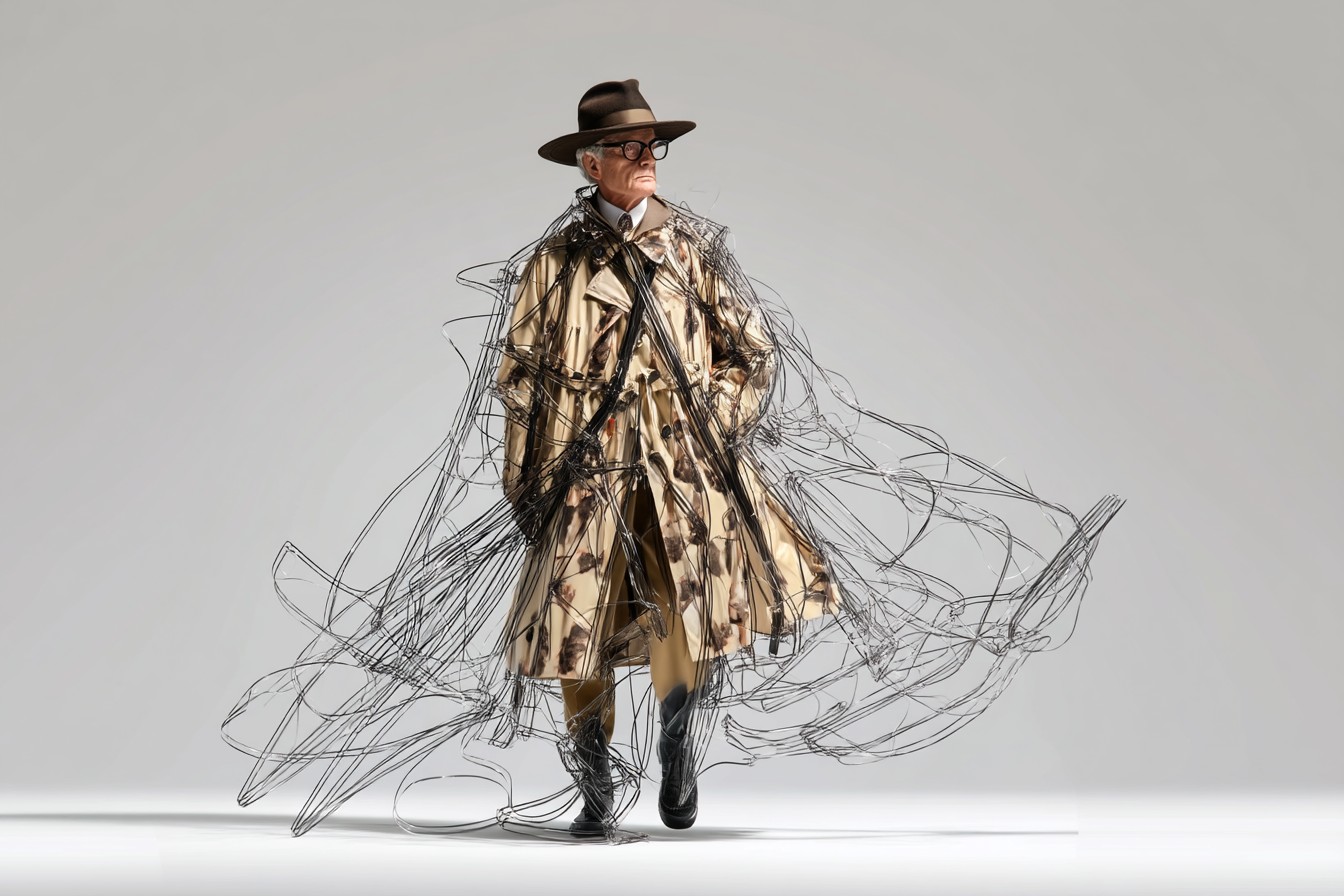I was caught in a biblical downpour last Tuesday. You know the type—the rain that falls so hard it bounces back up off the pavement, that makes gutters overflow and taxi drivers shake their heads sympathetically through their windscreens as they drive past, completely ignoring your increasingly desperate arm-waving. I was wearing a jacket that allegedly cost three hundred quid and had the word “weatherproof” prominently featured in its online description. Weatherproof, my arse. I squelched into my flat twenty minutes later looking like I’d gone swimming fully dressed.

The Great British Raincoat is one of those mythical beasts we spend our entire adult lives hunting for. Like the perfect pair of jeans or a genuinely reliable tradesman. You think you’ve found it—that one coat that will finally, FINALLY keep you properly dry—and then along comes the special kind of rain that only Britain can produce, the kind that seems to defy physics by coming at you from underneath and inside at the same time.
After fifteen years of writing about men’s style, I’ve built up quite the collection of raincoats. The wardrobe in my hallway groans under the weight of waxed cotton, Gore-Tex, tightly-woven wool, and various space-age technical fabrics named after mountains and weather systems. “That’s a lot of coats for one person,” remarked my dad last time he visited, in that particularly northern way of pointing out excess without directly criticizing it. I mumbled something about “research” and “professional necessity,” but the truth is I’m still looking for The One. The perfect raincoat that won’t bankrupt me, make me look like I’m about to climb Everest on my way to Tesco, or—crime of crimes—actually let me get wet.
Let’s get the obvious out of the way. Yes, Burberry makes great raincoats. So does Mackintosh. Aquascutum too. We know this. The British heritage brands have been keeping the upper classes dry since Victorian times. My problem isn’t with their functionality (mostly excellent) but with the small issue of needing to eat and pay rent as well as own outerwear. The last Burberry trench I tried on—just tried, mind you—cost roughly the same as my first car. A beautiful, honey-colored thing with perfect horn buttons and a check lining that made me feel like I should be carrying an umbrella with a carved wooden handle and wearing proper bench-made shoes instead of the battered Clarks desert boots I had on. “It’s an investment piece,” purred the sales assistant, who clearly recognized the look of someone experiencing severe sticker shock. “You’ll have it for decades.”

She wasn’t wrong. At that price, I’d be wearing it to my funeral to get proper value for money. But here’s the thing: British rain doesn’t care how much your coat cost. It doesn’t politely avoid you because you’ve spent a month’s salary on waterproofing. We need solutions that work without requiring a loan application. So let’s talk about actually affordable rainwear that does the job.
First up, mountain brands. Not the obvious North Face or Patagonia (although both make solid options), but the slightly nerdier, more serious mountaineering companies. Rab, based in Derbyshire, makes technical jackets that will handle a Lake District deluge, let alone a London drizzle. They’re not cheap—we’re talking £150-250 range—but for something that could genuinely save your life on a hillside and will definitely keep you dry on your commute, that’s reasonable. Their Downpour jacket is an entry-level option that packs down small, comes in colors that won’t make you look like an escaped highlighter, and actually, properly works. I’ve had mine for four years and it still keeps me bone dry, which is more than I can say for coats costing three times as much.
The trick with the mountain brands is to go for their simpler options. You don’t need seventeen pockets and a built-in harness system for urban use. Their “lifestyle” ranges often have cleaner designs that don’t scream “I’M GOING HIKING” quite so loudly. Mountain Equipment’s Squall Hooded Jacket has been my go-to for particularly vile weather days for the past two winters. It’s about £190 but gets discounted regularly, and it’s possibly the most effective rain barrier I’ve ever owned. Doesn’t look half bad either, especially in navy.

If you want something more traditional-looking, then British country brands are worth investigating. Before you scroll past thinking I’m about to suggest you dress like your uncle who lives in the Cotswolds, hear me out. Brands like Barbour and Joules make waxed and technical jackets that handle proper countryside weather—which, last time I checked, is considerably worse than city weather. Barbour’s Bedale, while not cheap at around £250, is practically indestructible with care and rewaxing. Too warm for summer downpours? Their lighter weight options like the Golspie or the newer waterproof breathable ranges start at about £180 and look considerably more modern.
For the genuinely budget-conscious (and aren’t we all these days), here’s my secret: outdoor equipment shops rather than fashion retailers. Go to Go Outdoors, Decathlon or Millets rather than ASOS or John Lewis. Brands like Craghoppers and Regatta make perfectly functional raincoats in the £50-100 range. Are they cutting-edge style statements? No. Will they keep you dry for years? Absolutely. My mate Dave—a cameraman who spends most of his working life standing in fields in the rain waiting for something to happen—swears by his £60 Craghoppers jacket. “Five years, mate. Not a drop gets through.” If it works for someone whose livelihood depends on staying dry, it’ll handle your dash from the Tube to the office.
The real insider tip? Army surplus. British military wet weather gear is designed for people who have to function in the absolute worst conditions while carrying heavy equipment and potentially being shot at. Your requirements are probably less demanding. Places like Silvermans or online surplus stores sell genuine military Gore-Tex jackets for around £100. They’re not pretty—usually in camo or olive drab—but you can find plainer options if you hunt around, and nothing, NOTHING is more waterproof. I have an ex-RAF jacket that I’ve had for nearly a decade. It’s ugly as sin but bombproof in bad weather, and cost me £85.

If you’re after something that looks a bit more presentable for work, Uniqlo’s BlockTech range deserves a mention. For about £90, their coats offer surprisingly effective waterproofing in clean, minimal designs that don’t scream “I’m wearing technical clothing!” They’re not for mountaineering or standing at football matches in January, but for urban downpours and normal commuting, they’re excellent value. The cotton-blend options look like proper macs rather than hiking gear, and they’re cut slim enough to layer over workwear without making you look like the Michelin Man.
The high street isn’t completely useless either. M&S has seriously upped its game in the past few years. Their “Stormwear” fabric technology actually works, and you can pick up a decent raincoat for around £80-120. I was deeply skeptical until a stylist friend who does a lot of outdoor shoots recommended their navy cotton rain mac. I’m now on my second one. Is it as good as a high-end technical piece? No. Is it perfectly adequate for most British weather situations and doesn’t look out of place in an office? Absolutely.
A word on sustainability, because we need to talk about it. Better quality costs more upfront but means you’re not buying a new coat every year when your cheap one fails or falls apart. Brands like Finisterre, based in Cornwall (where they know a thing or two about bad weather), make ethical, sustainable rainwear starting at around £150. Their lifetime repair policy means they’ll fix damage rather than expecting you to replace the whole coat. Same goes for Patagonia’s Worn Wear program.
Let me end with a few hard-learned practical tips, regardless of your budget. Always, ALWAYS check that a coat has sealed or taped seams. Waterproof fabric means nothing if rain can seep through the stitching (learned this the hard way during a particularly miserable weekend in the Peak District). A proper hood that actually stays up in wind is non-negotiable—those little fashion hoods that sit nicely on your head in a changing room will be completely useless in an actual storm. And spare a thought for length. Those trendy cropped jackets? Brilliant for showing off your outfit, useless for keeping your thighs dry when the rain is coming in sideways.
My current everyday raincoat is a three-year-old Rains jacket—Danish brand, about £110, matte black, looks good over everything from suits to jeans. Is it the absolute pinnacle of waterproof technology? No. But it keeps me dry in 90% of situations, packs down small enough to live permanently in my work bag, and doesn’t make me look like I’m about to summit Ben Nevis or shoot grouse. For the truly apocalyptic days, I’ve got the Mountain Equipment coat hanging by the door, ready for action.
The hunt for the perfect affordable raincoat is probably Britain’s longest-running style quest. We’re a nation shaped by our terrible weather, both literally and sartorially. But you don’t need to spend Burberry money to stay dry. Just a bit of knowledge, a willingness to look beyond fashion brands, and perhaps the acceptance that sometimes function really does need to trump form. Because there’s nothing stylish about standing in a meeting room while a small puddle forms around your shoes, trust me on this one.
Oh, and buy an umbrella as well. A proper one with vents that won’t turn inside out in the first gust of wind. Belt and braces, folks. This is Britain, after all.

Leave a Reply